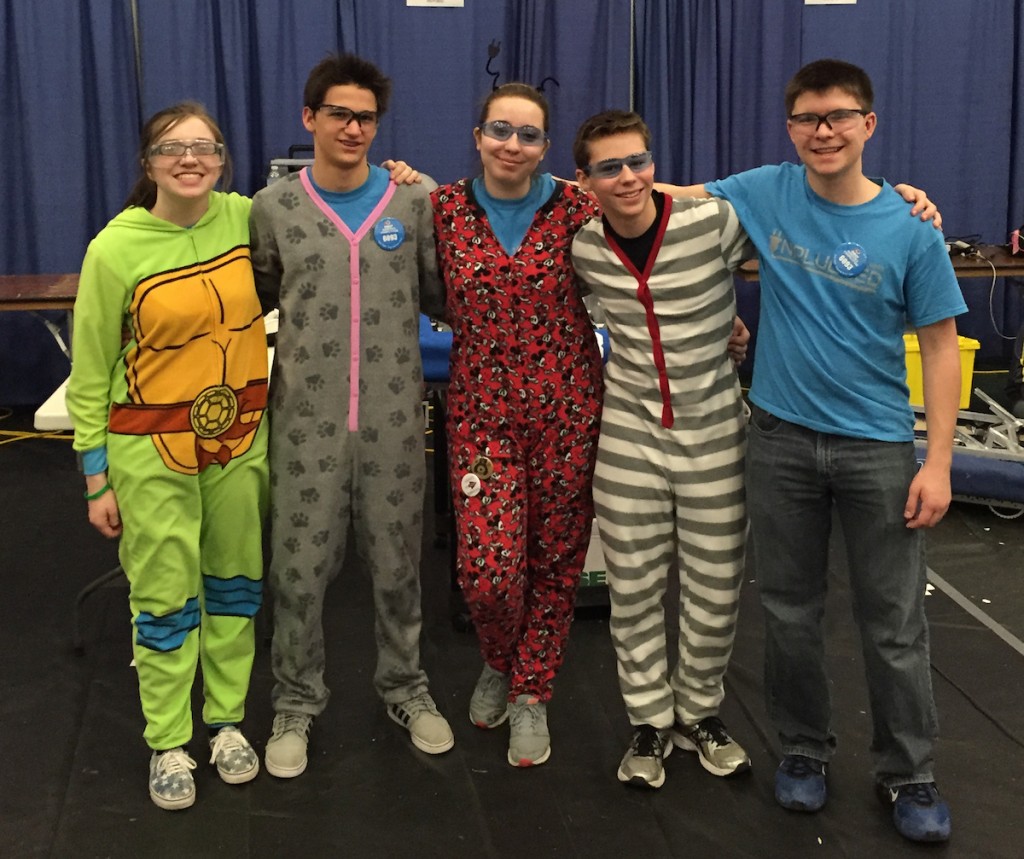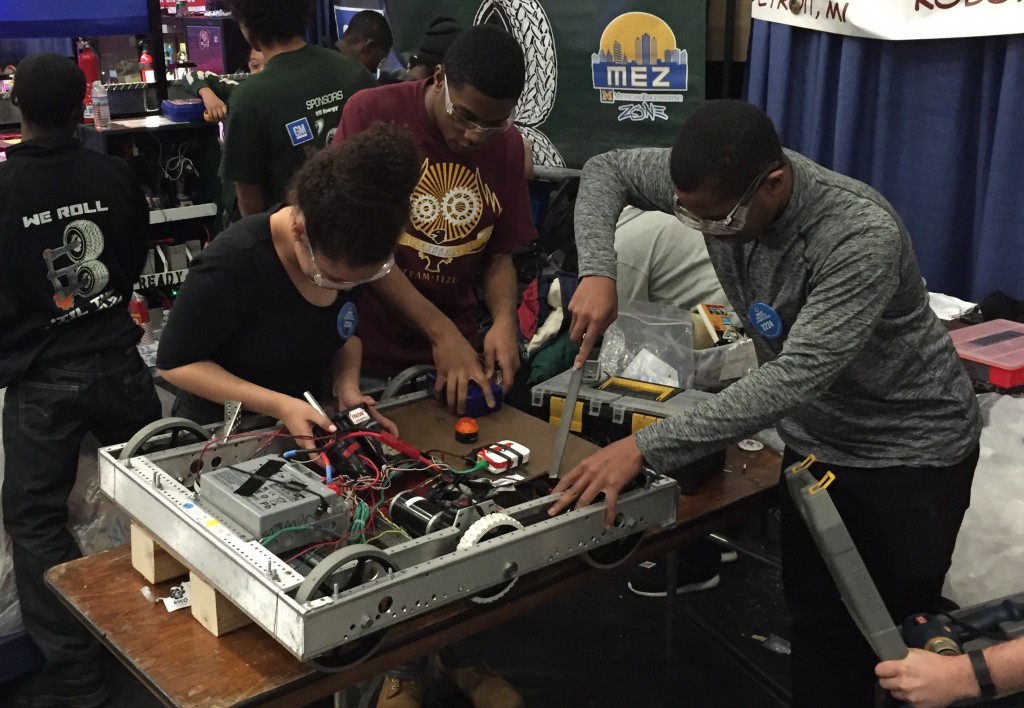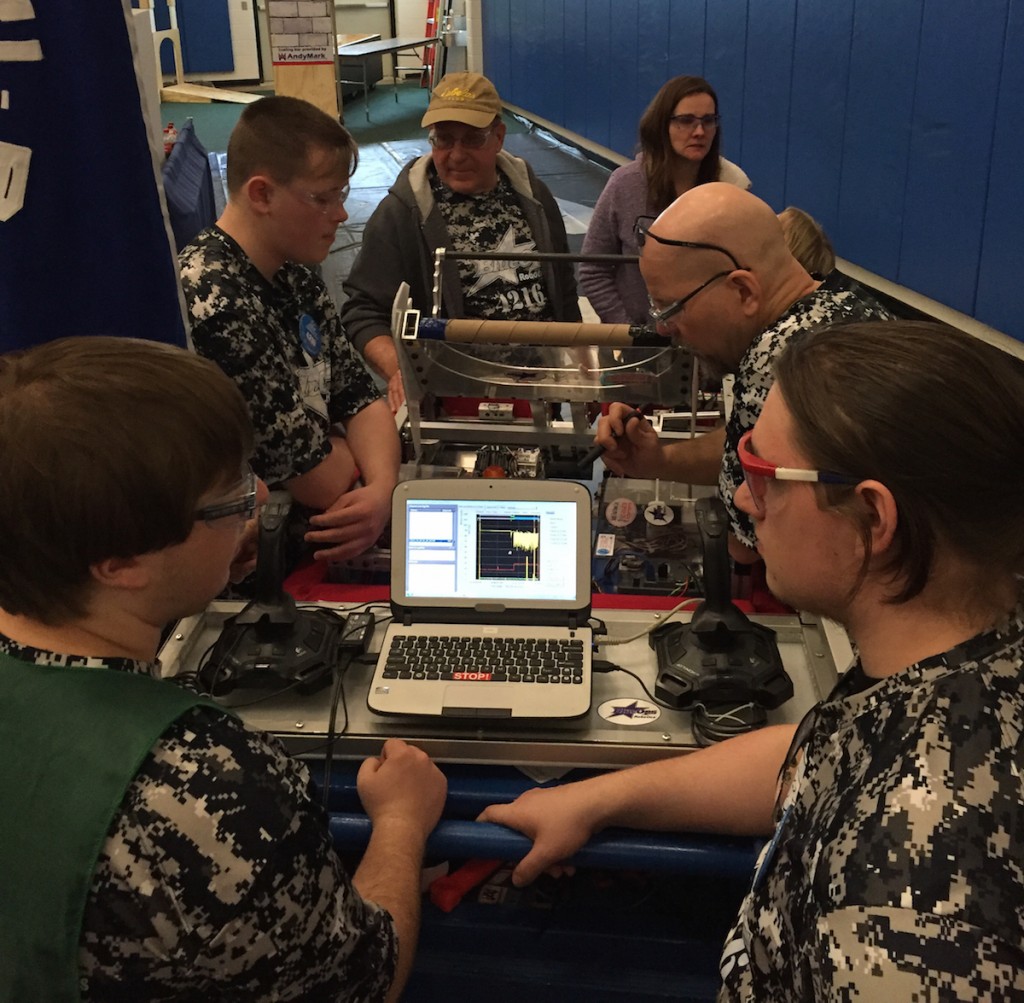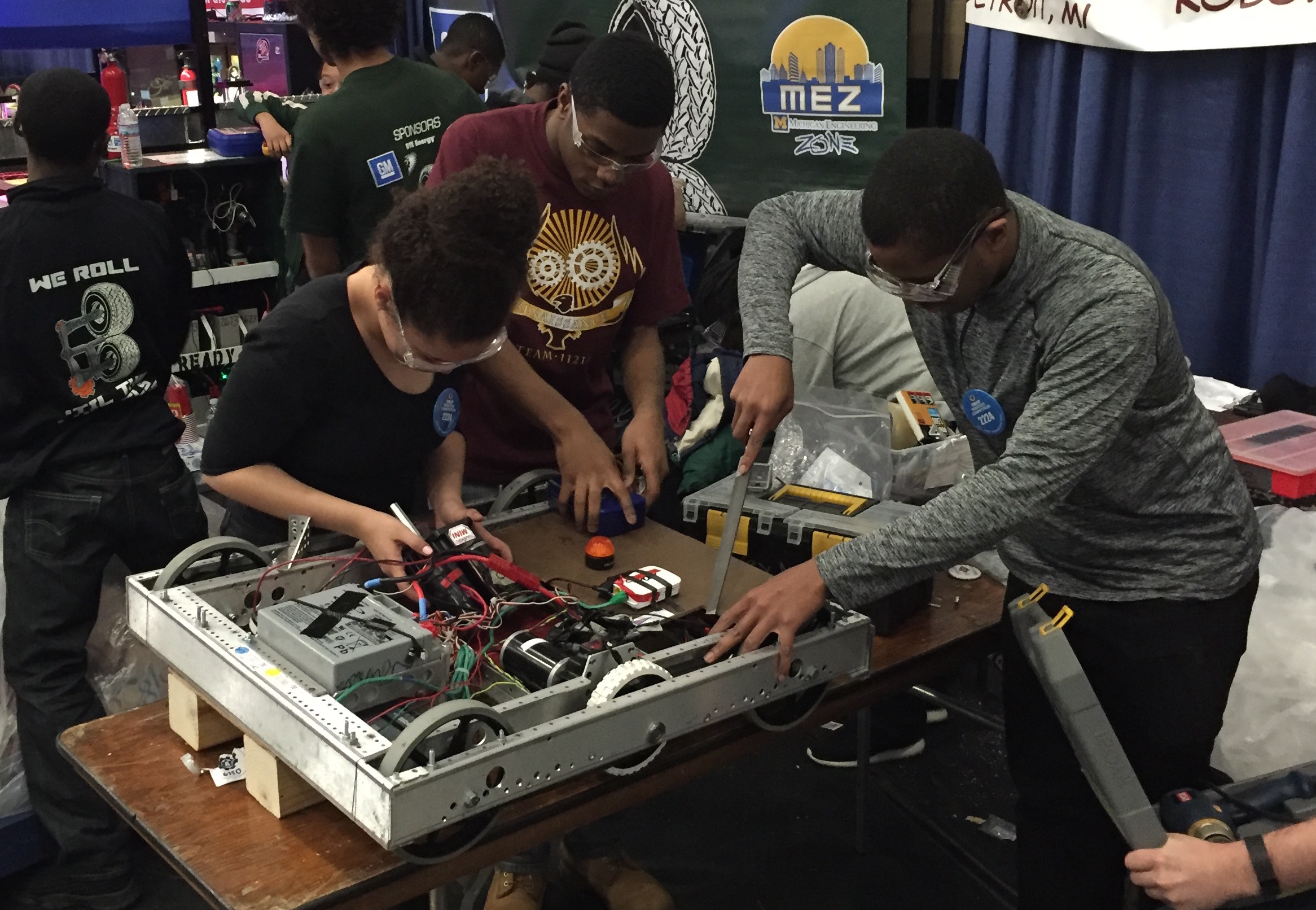There are five seconds left on the clock, and the Blue Alliance is down by two points. Machine 3536 picks up a ball and speeds toward the opponent’s castle. This is the Blue team’s only hope of surviving the battle. The clock winds down, and the final shot is fired. The crowd is silent. The ball breaches the castle, and the arena erupts in cheers—the Blue team is victorious!
If you are wondering if this is a dramatization of the intensity of a robotics match, I can assure you, it is not. I recently had the pleasure of judging a FIRST (For Inspiration and Recognition of Science and Technology) Robotics competition, and it is one of the most exciting sporting events that I have ever attended.
My favorite aspects of the event included the diversity of teams—in the realms of gender and race, but also in the passion of the players and the support of their communities.
Diversity and Opportunity
The aspect of the competition that was most compelling to me was the diversity in students that participated. To be honest, I expected the majority of teams to consist of middle-to-upper class white males. I was very wrong.

Robotics teams vary in socioeconomic status, race, and gender. A study that examined 14 teams across New York and Michigan exposed some pretty incredible data points:
- 44% of participants were Caucasian and 56% were African-American, Asian, Hispanic, Native American, or multi-racial.
- 59% of participants were male, 41% female.
- Less than 1/4 of participants came from families where both parents graduated from a two- or four-year college.
- 99% of participants graduated high school, 89% of them went on to college, and only 5% reported being unemployed at the time of the survey.
These statistics are amazing. They confirm that both female and male youth of all races are interested in science, technology, engineering, and mathematics (STEM). It also shows that individuals who participate in FIRST are more likely to achieve an education and be successful in life.

Some may assume that the success of youth who participate in FIRST is due to the exceptional intelligence of individuals interested in robotics. Though that is true for many participants, it is not a requirement for achieving success in FIRST. There are multiple factors that contribute to the development of the individual including teamwork, communication, mentorship, and applied learning. FIRST emulates a real-world business and engineering environment that enables students to evolve their problem-solving skills and establish a confidence in themselves.
Community and Spirit
FIRST Robotics would not be possible without community support. Practice, outreach, and competitions make for a huge time commitment that is aided by family, mentors, and educational centers. Families provide support by facilitating transportation and encouraging participation. A great example of this is the massive amount of spirit that exists across organizations. At the competition I attended, the stands were packed with fans who rocked their team’s logos and colors. Some fan bases exceeded 30 people, and many teams had mascots!
In addition to the support that family provides, mentors play a vital role in the structure of a robotics team. They exist to keep a team focused and to supply advice when needed. Many teams I talked to had a huge amount of respect for their mentors and were very thankful for their efforts.

A final aspect of community that I observed was the presence of education centers in some team’s stories. One example of an education center is the Michigan Engineering Zone (MEZ) in Detroit. Sponsored by the University of Michigan, the MEZ is a facility that gives Detroit students access to the tools and knowledge required to build a robot. It was so glorious to see teams from distressed communities participate in the competition. In fact, the (robo)LIONS, a group of student athletes who built their robot at the MEZ, ended up taking home the gold!
Enabling Greatness in Our Youth
I can say with confidence that witnessing a FIRST Robotics competition changed my life and inspired me to get involved immediately. The program encourages students to learn about business, mathematics, programming, mechanical engineering, art, communication, and collaboration–something that cannot be said about any other sport in the world. It exposes our youth to diversity and prepares them for a future free of discrimination and full of success.
I am excited to continue to volunteer for this cause and look forward to the time when I can enroll my children in the program. If you are interested in getting involved, visit firstinspires.org to find out which opportunity is right for you.

